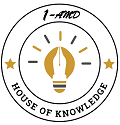Design of BMT Al-HUDA UNS Savings Information System
Keywords:
Information System, Savings, BMT, Al-HUDA, WaterfallAbstract
This study aims to design a BMT Savings Information System (Baitul Maal wat Tamwil) at Al-HUDA, Sebelas Maret State University (UNS) Surakarta to improve the efficiency of member fund management. This system is designed to facilitate the process of deposits, withdrawals, transaction recording, and real-time web-based financial reporting. The system development method uses the Waterfall approach, starting from needs analysis, design, implementation, to testing. The results of the study show that this system is able to reduce manual errors, speed up the transaction process, and improve BMT financial accountability. With this system, it is expected to support the digitalization of sharia financial services in the campus environment and provide convenience for members in managing savings.
References
1. Aisyah, E. N., Zuraidah, Z., & Maulayati, R. R. (2021, April). Risk mitigation of covid-19 pandemic in Baitul Maal Wat Tamwil. In International Conference on Engineering, Technology and Social Science (ICONETOS 2020) (pp. 691-696). Atlantis Press.
2. Alsmadi, A. A., Moh'd Al_hazimeh, A., Al-Afeef, M. A., Al-Smadi, A. W., Rifai, F., & Al-Okaily, M. (2023). Banking services transformation and financial technology role. Information Sciences Letters, 12(1), 315-324.
3. Alsudairi, M. A. (2012). E-service quality strategy: Achieving customer satisfaction in online banking. Journal of Theoretical and Applied Information Technology, 38(1), 6-24.
4. Anonymous - islamic financial services industry - stability report. (2023). The IFSB's Islamic Financial Services Industry (IFSI) Stability Report 2023 presents an assessment of the key vulnerabilities, resilience, and future outlook. Accessed on October 27, 2024 - https://www.ifsb.org/wp-content/uploads/2023/10/Islamic-Financial-Services-Industry-Stability-Report-2023_En.pdf
5. Aripin, N. T., Fatwa, N., & Hannase, M. (2022). Layanan Digital Bank Syariah Sebagai Faktor Pendorong Indeks Literasi Dan Inklusi Keuangan Syariah. Syarikat: Jurnal Rumpun Ekonomi Syariah, 5(1), 29-45.
6. Bakhri, S., Rofiq, A., & Ismail, M. (2022). Analysis of Factors in the Use of Mobile Applications to Improve Services to Members of BMT UGT Nusantara. In International Conference on Research and Community Services (ICORCS) (Vol. 1, No. 1, pp. 63-75).
7. Bashori, Y. A., Umami, K., & Wahid, S. H. (2024). Maqasid Shariah-Based Digital Economy Model: Integration, Sustainability And Transformation. Malaysian Journal of Syariah and Law, 12(2), 405-425.
8. Dunn, J. R., & Varano, M. W. (1999). Leveraging Web-based information systems. Information Systems Management, 16, 60-69.
9. Ginanjar, A., & Kassim, S. (2021). Roles of Islamic Microfinance Institutions in Improving Financial Inclusion in Indonesia: Empirical Evidence from Baitulmaal wa Tamwil. Al-Iqtishad: Jurnal Ilmu Ekonomi Syariah, 13(1), 87-108.
10. Haidar, A., Assalafiyah, A., & Herindar, E. (2022). Fintech-Micro BMT (FMB): Financial Technology Innovation as a Solution for Efficient, Sustainable, and Socially Impactful BMT. Islamic Fintech:(Present and Future), 75.
11. Javaid, O., & Suri, A. W. (2016). Bureaucratic System of Management in Islamic Financial Institutions: Implications & Alternatives for Social Inclusion. Journal of Islamic Business and Management, 6(2).
12. Marjulin, M., Hazmi, Y., Hilmi, H., Zulkarnain, T., & Busra, B. (2023). Baitul Maal learning organization in producing quality zakat accounting information. JPPI (Jurnal Penelitian Pendidikan Indonesia), 9(3), 1632-1639.
13. Pramanik, H. S., Kirtania, M., & Pani, A. K. (2019). Essence of digital transformation—Manifestations at large financial institutions from North America. Future Generation Computer Systems, 95, 323-343.
14. Pratiwi, A., & Mauliyah, N. I. (2024). The Role Of Financial Reporting In The Effectiveness Of Management At Pesantren Raudlatul Ulum: Challenges And Innovations. International Journal of Artificial Intelligence Research, 8(1.1).
15. Rachma, N., & Muhlas, I. (2022). Comparison of waterfall and prototyping models in research and development (r&d) methods for android-based learning application design. Jurnal Inovatif: Inovasi Teknologi Informasi Dan Informatika, 5(1), 36-39.
16. Septianingsih, R., & Abdullah, A. (2023). Awareness of Islamic Consumers Baitul Maal Wat Tamwil (BMT) in Riau. In Finance, Accounting and Law in the Digital Age: The Impact of Technology and Innovation in the Financial Services Sector (pp. 583-592). Cham: Springer International Publishing.
17. Shulthoni, M., Adinugraha, H. H., Rumiyati, E., Imani, F., & Achmad, D. (2023). What is the Model of Sharia Marketing in Islamic Microfinance Institutions?. Journal of Digital Marketing and Halal Industry, 5(1), 23-40.
18. Tripalupi, R. I., Yulianti, L., & Naafisah, D. D. (2024). Optimization of financial technology as an opportunity for development of islamic microfinance institutions. International Journal of Artificial Intelligence Research, 6(1.1).
19. Wang, X., & Ren, X. (2021, August). Development of Financial Technology and Digital Strategic Transformation of Commercial Banks Based on Matrix Algorithm. In 2021 IEEE International Conference on Advances in Electrical Engineering and Computer Applications (AEECA) (pp. 873-877). IEEE.




